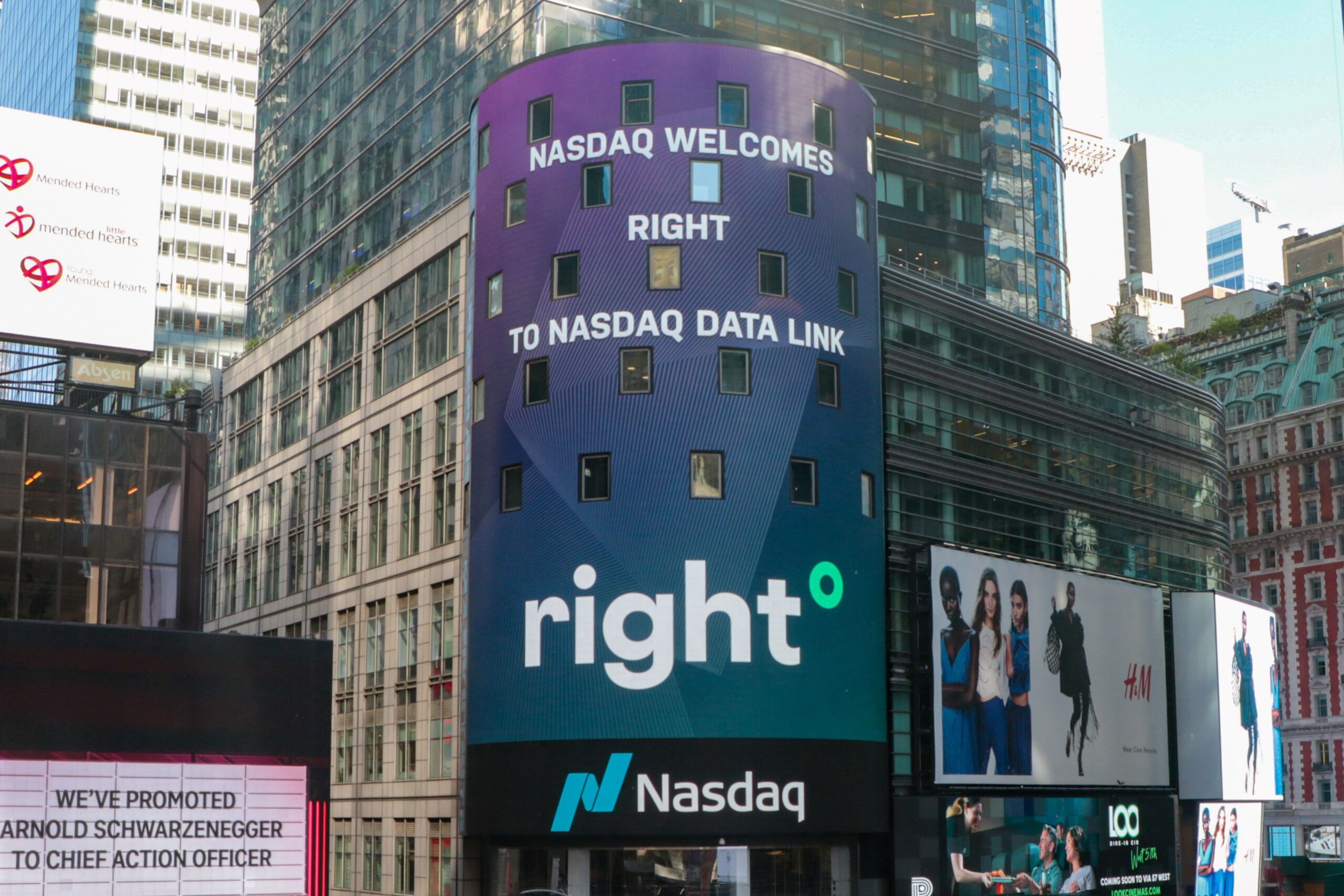Steffen Scheuble is founder and CEO of Solactive AG, an index provider that bought a minority stake in the climate metrics startup right. based on science in January 2020. The BEAM magazine interviewed Scheuble, together with right. based on science founder and CEO Hannah Helmke.
05.10.2020
Creating a 2°C Aligned Index | Interview with Steffen Scheuble & Hannah Helmke
News

What prompted your decision to collaborate and what are the aims of this partnership?
Scheuble: Environmental, Social, and Corporate Governance (ESG) is the most trending topic with a massive tilt towards the first letter of the acronym. This trend is driven by contemporary social movements, like Fridays for Future, regulations and policies that are currently developing into cohesive frameworks. However, existing and soon-to-be-existing ESG concepts and definitions still remain a confusing maze. It is our mission to guide our customers through this, taking into account different views and interpretations across countries, institutions and projects.
Our decision to team up with right. based on science was driven by the realisation that the start-up marries two very attractive features. In their backend, there is a sophisticated model based on the latest scientific research in climate science, which, in their frontend, outputs an intuitive climate metric expressed tangibly in degree Celsius. How more accessible can one express a company’s contribution to global warming?
In addition to the utilisation of right.’s data in our index constructions, we identified a scope ranging from portfolio analytics over regulatory reporting to help individual corporations design and fulfill their climate strategies.
In your stock market index, which lists European companies currently aligned with maximum two degrees global warming, you counted only 274 of them among the 600 that have been analysed. Was this result unexpected?
Helmke: We didn’t have definitive expectations of how many companies would make the index, but we did have a clear sense that it would be less than half. An important point here, though, is that our analysis only looks ahead from the base year 2018 to 2050, as anything beyond that becomes scientifically uncertain. This could mean that some companies are currently aligned until 2050, but would then start to exceed their emissions budgets in 2051 if they don’t make any changes. So, even the companies that are in the index will need to keep working towards greater emissions efficiency to stay aligned with the Paris Agreement.
Another crucial point is that, in order to determine so-called “Paris alignment”, we always compare a company’s climate impact (degree Celsius) with a target temperature that is specific to that company’s own sector. We use the International Energy Agency scenarios here, so an energy provider does not need to reduce emissions to the same level as a telecoms company. Rather, all sectors, all nations and, ultimately, all of us need to make changes if we want to transition to a <2°C future.
ESG and “sustainable finance” have been buzzwords in the financial industry for many years now. Yet, change has been slow and a lot of scepticism remains. What are the main obstacles here? Would you say that the tide is turning?
Scheuble: Indeed, ESG used to be a market segment with more talk than action. Increasingly, the buzz is being backed up with actual asset flows. One issue here is the lack of standardisation and regulation. The term ESG is still subject to a variety of interpretations and fraudulent use. For example, from our perspective, it is not enough to simply exclude companies that are affiliated with controversial industries like tobacco, fossil fuel, or gambling and then label it ESG. The real societal value of ESG will occur as soon as companies that adhere to ESG principles are favoured, while the ones that are not compliant are penalised by receiving fewer investments. That, to me, is credible ESG. What we need, to make this work, is more transparency of ESG strategies and clear standardisation.
In terms of performance concerns, the recent proposal by the U.S. Department of Labor (DOL) that discourages ESG investments for certain pension plans in the U.S., is a clear example that some scepticism remains. However, this prompted a backlash from prominent asset owners, such as State Street, who pointed out the connection between ESG and the long-term financial interest of retirement savers. The results of global research are still very heterogeneous, but I think that we’ll observe a clearer picture once ESG strategies hold a longer track record.
Comparing the 2-degree index and the Europe 600, to our great joy, there is no loss in performance. On the contrary, many other ESG and sustainable investment strategies have proven their effectiveness, both in ethical and financial manner. If one asks for the added performance or outperformance of ESG strategies compared to their benchmarks, one should eventually reconsider the motivations for this interest in the first place.
What is your expectation for the investment volume for this index and for ETFs that are based on it?
Scheuble: Well, predictions have always been hard to make – and that is especially true this year. However, more than half of institutional investors believe most of their ESG investments will be held in passive products by 2025, according to research conducted by Invesco. This prediction goes hand in hand with our own experience in the market: nearly every client raises the topic of ESG in meetings with us. So, there is a huge potential in the overall ESG space, and we believe that climate and temperature alignment, in particular, will play an important role. We have not defined a specific target for assets linked to products tracking our joint index, though.
Many would argue that focusing on climate alone is not enough, that including other environmental factors as well as social aspects is equally relevant. What are your reasons for choosing climate for your index?
Scheuble: The E part in ESG takes the lead role, but social and governance factors are very relevant too. Our first index with right. can be regarded as a baseline, from which clients can apply additional ESG filters such as plain exclusions of controversial industries or companies, or only inclusion of the ‘best of class’. The index creates an unique, strong and science-based foundation with regards to the companies’ climate impact.
Helmke: I agree. Our aim never has been to claim that climate impact or emission reduction is the only aspect that companies and investors need to look at. Rather, there are 17 UN SDGs and our team of nearly 30 experts focuses on just one of them (SDG 13). The reason behind our focus is that climate is an area where the market really lacks transparency and where there is still a gap between science on the one hand and business, investment and policy decision making on the other. We want to bridge that gap.
Recent reports of drought in Germany, heat waves in Siberia and Greenland’s ice sheet crossing the tipping point have, once again, prompted many pessimistic views. What gives you hope when you look ahead towards the next five to ten years? And what role do you think the financial industry will play in this?
Helmke: Dealing with climate science every day can certainly make the challenges seem overwhelming. What we are seeing from all sides – whether companies, banks, investors, municipalities, or NGOs – is a totally new, genuine interest and willingness to make meaningful change. Of course, we wish that this had been possible much sooner. But I also believe that innovative technology and a wealth of data, which we did not have before, will help us find new solutions. The financial industry will be absolutely crucial here, by taking investments away from ‘change resistant’ companies and directing capital flows towards those companies, innovators and changemakers that can make the transition to <2°C possible.
First published on the-beam.com
More news
right° launches climate alignment data for investors

Climate metrics for real estate: Quantum takes a 50% stake in real estate division of right°

manaos and right° join forces to deliver °C met...
right° appoints Jacopo Pellegrino, PhD as CTO




